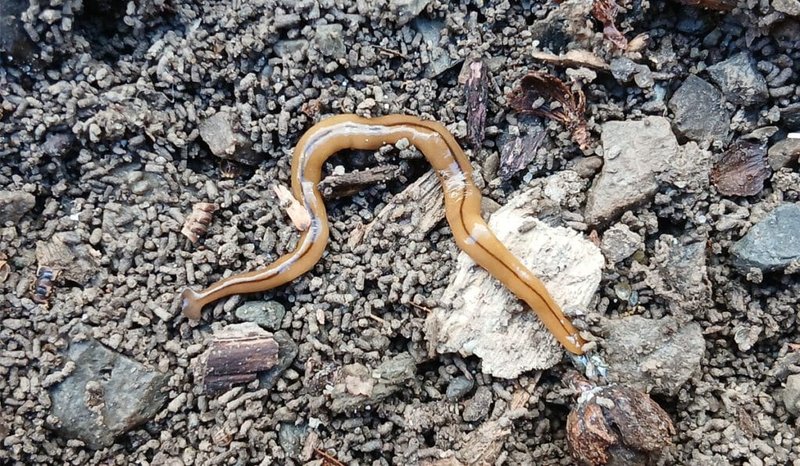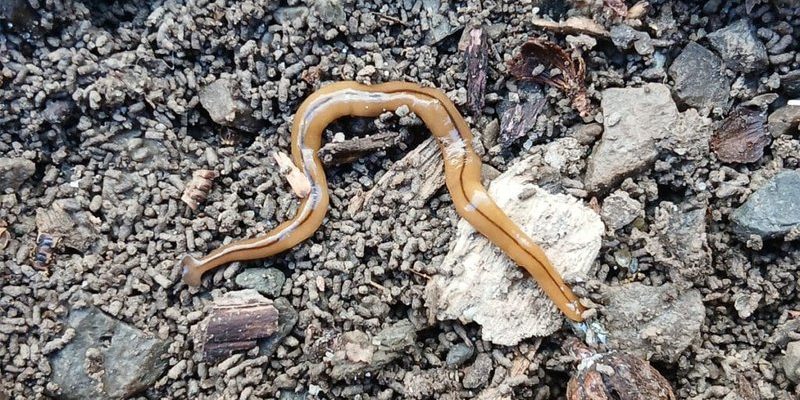
If you think of this worm as a delicate flower that blooms only under specific weather conditions, then moisture is its sunlight. Too little moisture, and it wilts; too much, and it can drown. Understanding these **moisture conditions** can help backyard gardeners, curious nature lovers, or anyone interested in keeping these crafty little creatures in check. Let’s dive into what makes hammerhead worms so active in particular environments.
Understanding Hammerhead Worms
Hammerhead worms belong to a group of flatworms known as *Bipalium*. These creatures are known for their flattened bodies and, you guessed it, their hammer-shaped heads. Native to tropical regions, they have now spread to various parts of the world, especially in warm, humid areas.
Honestly, if you spot one in your garden, don’t panic. They’re relatively harmless to humans but can be a threat to local ecosystems. They have a voracious appetite for earthworms, which can disrupt the soil’s health. So, while they might seem like an odd, colorful addition to the garden, they can cause some trouble if they get too comfortable.
But what makes these worms thrive? It all comes down to moisture and the right conditions. If you’re curious about how to create or combat their presence, understanding their moisture needs is key.
Moisture Levels That Attract Hammerhead Worms
For hammerhead worms, **moisture** is like a magnet. These worms flourish in environments with high humidity and moisture content. You might find them lurking around in areas where the ground is damp, especially after a rainstorm or in consistently wet regions.
So, what are some factors that contribute to the moisture levels favoring these worms?
- Soil Composition: Sandy or loamy soils tend to retain moisture better than clay soils, making them prime spots for hammerhead activity.
- Temperature: Warm, humid climates boost moisture retention, providing the perfect environment for these worms to thrive.
- Rainfall: Frequent rainfall saturates the ground, creating ideal conditions for hammerhead worms to emerge and roam about.
You might be wondering, “How do I know if I have the right conditions for these worms?” Simply put, if your garden feels consistently damp and you see these squiggly creatures often, it’s time to take note!
Seasonal Changes and Hammerhead Worm Activity
Seasons play a significant role in hammerhead worm activity. With spring and summer being their peak seasons, these worms become more visible as the temperatures rise and the ground becomes moist.
Here’s how each season affects their moisture conditions:
- Spring: As the snow melts and rains become more frequent, the soil warms up, creating a perfect breeding ground for hammerhead worms.
- Summer: High humidity during hot summer days keeps the soil moist. This is when these worms are at their most active, slithering around after rain showers.
- Fall: The temperature begins to drop, but autumn rains can still maintain moisture levels, keeping these worms active for a little longer.
- Winter: These worms become dormant in colder weather. If the ground freezes or dries out, they might go underground or become inactive.
By observing these seasonal changes and moisture levels, you can better understand when to expect hammerhead worms in your garden.
Identifying Excess Moisture Conditions
While a little moisture is great for hammerhead worms, too much can lead to problems in your garden. Excess moisture often results in soggy soil, which can harm plants and create an undesirable environment.
Here are some signs that moisture levels might be getting a little too high:
- Pooling Water: If you notice water collecting in certain spots after heavy rain, it’s a clear sign of excess moisture.
- Soil Saturation: When you dig into the ground and it feels mushy or sticky, that’s a sign that there’s too much moisture present.
- Mold or Fungus Growth: High moisture levels can encourage mold growth, which could create more problems for your garden.
If your garden shows these symptoms, it might be time to consider drainage solutions to prevent encouraging hammerhead worms and other moisture-loving pests.
Maintaining Ideal Moisture Levels
If you’re looking to maintain moisture levels that are good for your plants but less inviting for hammerhead worms, balance is crucial. Here are some tips:
- Use Mulch: Mulch helps retain soil moisture without making it soggy. It’s an excellent way to control moisture levels while promoting healthy plants.
- Improve Drainage: Incorporating sand or organic matter can improve drainage in areas that tend to stay too wet.
- Water Wisely: Instead of daily watering, consider deep but less frequent watering to keep soil moisture at healthy levels.
By keeping these tips in mind, you’ll create an environment that nurtures your garden while keeping hammerhead worms at bay.
Natural Controls for Hammerhead Worms
If you realize that hammerhead worms have set up camp in your garden, there are some natural controls you can explore. You might use certain methods that don’t involve chemicals, which can be harmful to the environment.
Some effective methods include:
- Encourage Predators: Birds, frogs, and certain beneficial insects love to munch on worms. Creating a habitat for these natural predators can help keep populations in check.
- Limit Watering: Reducing extra moisture through careful watering will make your garden less hospitable to hammerhead worms.
- Hand Removal: If you don’t mind getting your hands dirty, you can remove them. Just wear gloves and dispose of them properly.
You might think, “Isn’t that a bit much for a worm?” But keeping them under control protects your garden’s ecosystem, which is worth the effort!
In the grand scheme of things, understanding the moisture conditions that favor hammerhead worm activity is essential for maintaining a thriving garden. These creatures may be intriguing, but they can become a nuisance if left unchecked. Finding a balance is crucial—too much moisture invites hammerhead worms, while too little can stress your plants.
By understanding how moisture affects these worms and implementing techniques to control it, you can create a flourishing environment for your plants while keeping your garden free of unwanted guests. It’s like finding the right dance partner: with a little effort, you can make sure everyone gets along in your garden ecosystem!

